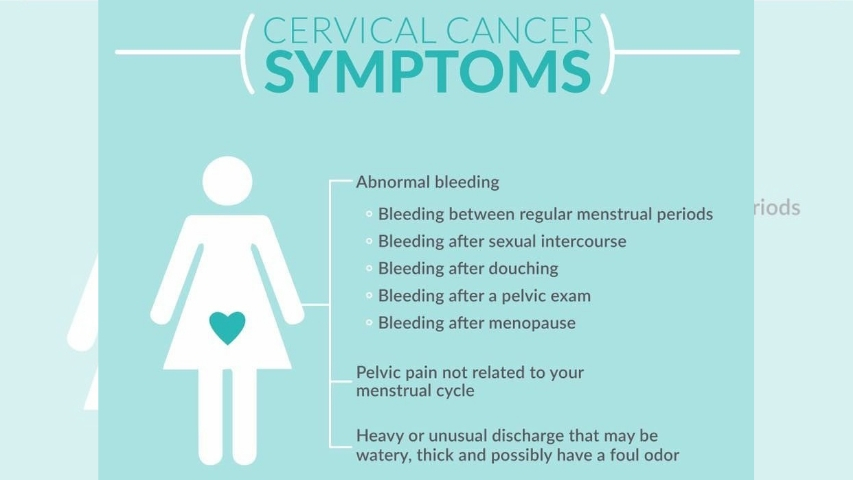
India can become cervical cancer free within the next 60 years
by Shruthi Venkatesh April 23 2019, 11:42 am Estimated Reading Time: 3 mins, 35 secsAn article from the India Today reports that cervical cancer may get completely eliminated by 2079. According to a recent Lancet study published on Wednesday, Cervical cancer could be eliminated as a public health problem in India within the next 60 years by implementing prevention programmes such as the human papillomavirus (HPV) vaccine and making cervical screening more accessible.
The study was led by researchers at the Cancer Council New South Wales in Australia. It showed that cervical cancer could potentially be eliminated as a major public health problem in 149 out of 181 countries by 2100.
In India, if intervention strategies are scaled-up by 2020, 13.4 million cases of cervical cancer could be prevented within the next 50 years. According to the study published in the Lancet Oncology journal, countries with medium levels of development, including India, Vietnam, and the Philippines, could be achieve by 2070-79. In high-income countries including the US, Finland, UK, and Canada, cervical cancer is predicted to be eliminated as a public health problem within 25-40 years.
This does not mean that the cervical cancer cases will decrease. The study predicts that 44.4 million cervical cancer cases would be diagnosed over the next 50 years - rising from 600,000 in 2020 to 1.3 million in 2069 due to population growth and aging.
“Despite the enormity of the problem, our findings suggest that global elimination is within reach with tools that are already available, provided that both high coverages of HPV vaccination and cervical screening can be achieved,” said Karen Canfell from the Cancer Council New South Wales.
“More than two-thirds of cases prevented would be in countries with low and medium levels of human development like India, Nigeria, and Malawi, where there has so far been limited access to HPV vaccination or cervical screening,” Canfell said.

Symptoms of Cervical Cancer (Integrated Cancer Institute)
Deadly facts on cervical cancer
- Cervical cancer is the fourth most common cancer in women, with an estimated 570,000 new cases diagnosed worldwide in 2018, of which around 85 per cent occur in less developed regions.
- HPV, a group of more than 150 viruses, is responsible for the majority of cervical cancers. HPV types (16 and 18) cause 70 per cent of cervical cancers and precancerous cervical wounds worldwide.
- More women in India die from cervical cancer than in any other country. Rural women are at higher risk of developing cervical cancer as compared to their urban counterparts.
- The highest estimated incidence rates for cervical cancer are in sub-Saharan Africa, Melanesia, Latin America and the Caribbean, south-central Asia and south-east Asia.
- Other epidemiological risk factors for cervical cancer are early age at marriage, multiple sexual partners, multiple pregnancies, poor genital hygiene, malnutrition, use of oral contraceptives, and lack of awareness.
2.jpg)
Cervical Cancer Screening Guidelines
How can cervical cancer be diagnosed?
If any of your screening tests (Pap test, VIA, HPV test) are found to be positive, further testing may be necessary to determine whether the changes in the cervix are cancerous.
A colposcopy may be performed and/or a small sample of tissue (biopsy) will be obtained from the cervix.
Colposcopy: A procedure in which a colposcope (a lighted, magnifying instrument) is used to check the vagina and cervix for abnormal areas.
Biopsy: If abnormal cells are found in a Pap test, the doctor may do a biopsy. A sample of tissue is cut from the cervix and viewed under a microscope by a pathologist to check for signs of cancer.
What actions have been taken to eliminate this highly preventable cancer?
In May 2018, the Director General of WHO called for coordinated action globally to eliminate this highly preventable cancer. WHO called for urgent action to scale up implementation of proven measures towards achieving the elimination of cervical cancer as a global public health problem. These include vaccination against HPV, screening, and treatment of pre-cancer, early detection and prompt treatment of early invasive cancers and palliative care.
“The WHO call-to-action provides an enormous opportunity to increase the level of investment in proven cervical cancer interventions in the world's poorest countries. Failure to adopt these interventions will lead to millions of avoidable premature deaths,” said Canfell.
A draft global strategy to accelerate cervical cancer elimination, with goals and targets for the period 2020-2030, will be considered at the World Health Assembly in 2020, the report states.




-173X130.jpg)
-173X130.jpg)
-173X130.jpg)
-173X130.jpg)
-173X130.jpg)
-173X130.jpg)
-173X130.jpg)
